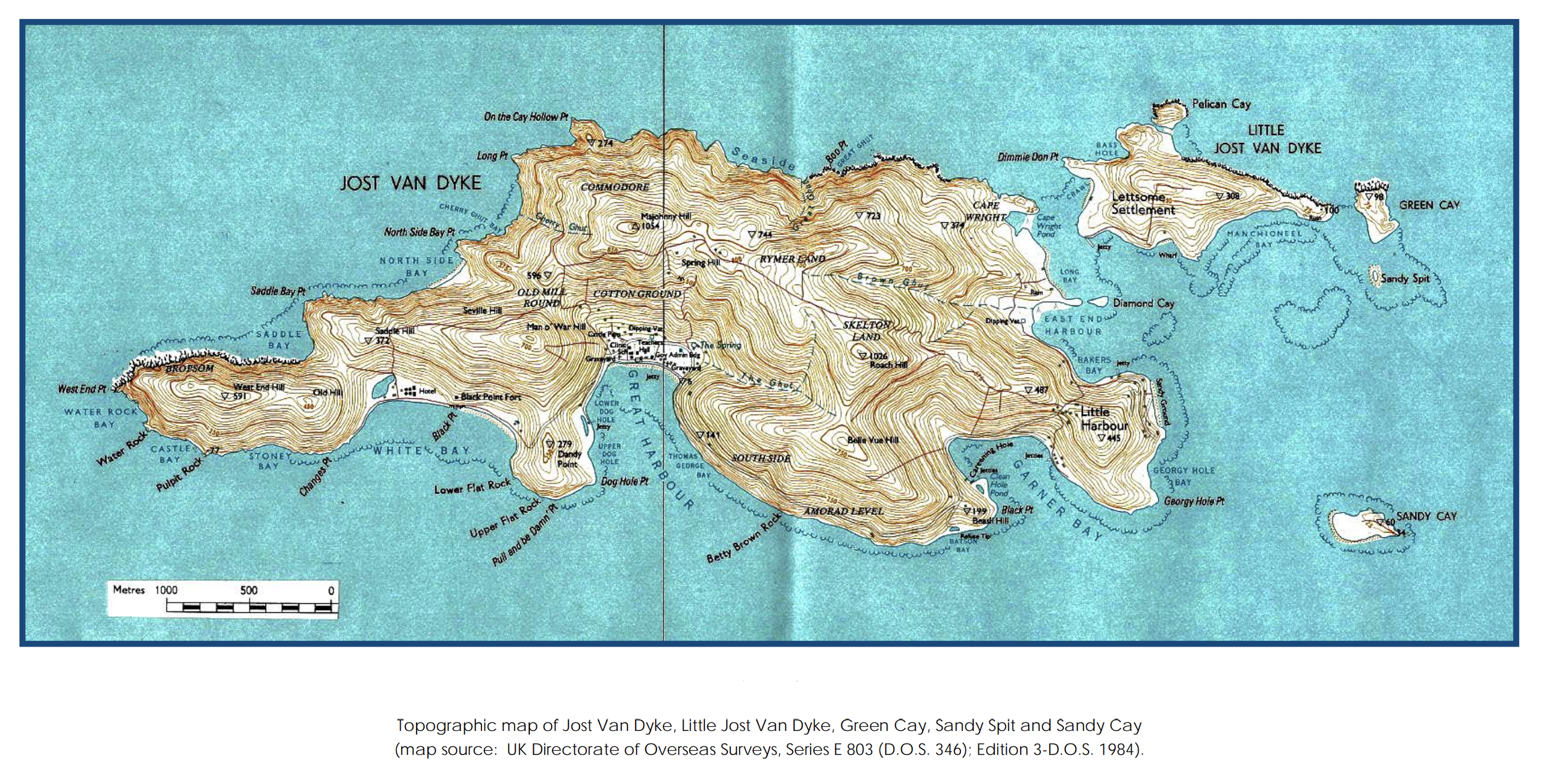
A Mangrove’s Story: Thriving Forest, Human Development, or Shrimp Farm?

A Mangrove’s Story: Thriving Forest, Human Development, or Shrimp Farm?
By Kate Alexander
_________________________________
The Great Harbour Salt Pond, Jost Van Dyke
March 21, 2022
Rocking back and forth with the spasmodic beat of the day’s stormy swells, the crew clumsily shuffles onto two dinghies tied to the stern. Small motors carry us twenty minutes due west through a seasonal saltwater channel into the Great Harbour Salt Pond, skirting the small island of Jost Van Dyke within the British Virgin Islands. Knobby sea trees curtain the channel’s three sides. Songs from hidden kingbirds, swallows, and warblers drift past our ears, enrapturing Gillian, myself, and the rest of our crew.
On a Tuesday in the summer heat of July, 2010, Gillian’s head pops out of the cloudy saltwater, her feet planted firmly on the sea floor. Spitting out her flamingo-pink snorkel, she exposes an ever widening grin. We spend the better part of the next hour wading through uncultivated, natural shallows bustling with edible land crabs, shrimp, and other invertebrates. Herons and White-cheeked Pintail Ducks prey upon the superabundance of young marine life around us within the Great Harbour Salt Pond. Gillian gestures to me, showing up ten fingers and flashing them at me three times. Her gestures reflect the number of Upside-Down Jellyfish she’s just counted undulating around her (30). We are here to observe and complete Reef Environmental Education Foundation species identification surveys of the various marine creatures sheltered within this elaborate and bewitching mangrove forest system.
Concealed by elaborate root systems growing out of the seawater, this salt pond is tucked along the island’s southern coast, appearing more like a hidden cove during seasonally high swells. The rising waters of the Caribbean Sea interrupt this otherworldly place, transforming it into a narrow saltwater channel shaded by dense, salt-resistant, gnarled looking trees and shrubs. Visible roots above the surface support four species of mangrove: Red, Black, White, and Buttonwood Mangroves. These sturdy plants make up a Caribbean saltwater forest fortifying Jost Van Dyke’s shoreline, growing between where low and high tides touch the coast.
Twelve years pass. This year, in 2022, I search and find out what has become of the Great Harbour Salt Pond. I find the salty forest greatly reduced in size from land development and a landfill that threatens the lives of hundreds of wild species hiding within its thick and magnificently gnarled cloak. Unfortunately, today’s tragic scene is not an unusual occurrence for mangroves world-wide.
Mangroves are some of the most biologically complex and productive ecosystems in the world, enhancing fisheries and storing atmospheric carbon that would otherwise contribute to global warming. Mangrove forests like the one at the Great Harbour Salt Pond are precious, indispensable, and need protection.
In 2014 the UN Environmental Programme reported, “over a quarter of the Earth’s original mangrove cover now lost.” Worldwide, the rate of disappearance of mangrove forest far exceeds that of tropical rainforest.
The main drivers of mangrove deforestation include coastal development, aquaculture, industrial activities, and rice / palm oil farming. In many developing regions, wars, forest fires, the price of mangrove wood, wood collection for fuel, and other human activities also play a part in mangrove deforestation.
The largest threat, however, to mangrove ecosystems is shrimp farming. The shrimp industry is responsible for at least thirty five percent of overall mangrove forest loss worldwide. Grocery store shrimp are often raised in aquaculture farms that are built on top of mangrove habitat like in Jost Van Dyke, where the kingbirds and swallows used to sing. To farm shrimp, a farmer must first clear the mangrove forest of all life in order to install money-making “shrimp pools” where they raise their shrimp.
You may be asking yourself, “What can we do about the tragedy at the Great Harbour Salt Pond on Jost Van Dyke?” I hope my response comes as a whisper when you’re next out on the town eating seafood with friends or family. A soft tone will murmur… “Remember, friend, the destruction that comes from ordering the shrimp hibachi combo or shrimp ceviche. If you can, please order something that doesn’t include shrimp!”
The Upside-Down Jellyfish, White-cheeked Pintail Ducks, and Black Mangrove trees of Jost Van Dyke breathe into you a resounding, “thank you.”
How To Get Involved:
If you want to get more involved in the fight against mangrove habitat loss, I strongly recommend helping fund any of these inspiring organizations are doing vital work to conserve and restore mangrove forests worldwide: Mangrove Action Project, Global Mangrove Alliance, the World Wildlife Fund, the International Union for the Observation of Nature, Mangroves for the Future, and the Bonn Challenge. These organizations cannot fight this fight alone. They need funding, which is where we come in! If you are broke, like me, consider becoming a member and choosing one of their memorable projects to become a part of.
Where to donate:
Mangrove Action Project – Donate
Global Mangrove Alliance – Become a Member
World Wildlife Fund – Donate Monthly, Donate Once, More Ways To Give
International Union for the Observation of Nature – Donate
Mangroves for the Future – Get Involved
Bonn Challenge – Make A Pledge
Hope for mangrove reforestation is built when we come together to use our collective resources for a common goal!